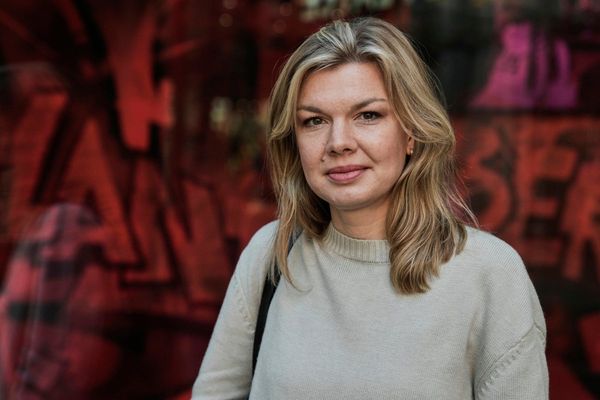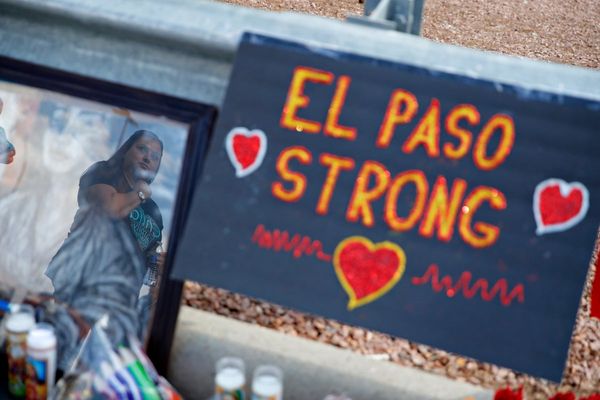
Almost two years ago, I wrote in these pages that the Tunisia model matters because it helped dispel the myth that democracy was not possible in the Arab world. As the countries around it descended into civil war or regressed into authoritarianism, Tunisia held free and fair national and local elections, adopted a liberal-democratic constitution, and witnessed a peaceful transition of power.
Now, however, Tunisia’s nascent democracy faces its greatest challenge yet. Last week, President Kais Saied hijacked the democratic process by freezing the parliament and consolidating executive power into his own hands. Although it is far too early to write a postmortem on Tunisia’s democratic experiment, these steps are threatening to return the country to its authoritarian past.
The events unfolding now also confirm the lessons from the first decade following Tunisia’s 2011 revolution. The country’s experience shows that democratization requires political leaders to put the needs of their country above their personal advancement. It also shows that democratic transitions are inherently messy and require tremendous international financial and diplomatic support to succeed.
The protests that began in Tunisia in 2010 ushered in the Arab Spring, and conventional wisdom holds that it represents that revolutionary era’s sole success story and a beacon of hope for the Arab world. Yet although Tunisia has made tremendous progress, its path toward democratic consolidation has been rocky. For example, frustration with the government led to mass protests and calls to dissolve the parliament in 2013. At the time, it took a national dialogue organized by four prominent civil society organizations to develop a road map out of the crisis. This has become a familiar pattern, as Tunisian political and civil society leaders repeatedly have had to course-correct and bring the transition back from the brink.
Tunisia’s nascent democracy faces its greatest challenge yet.
Whether Saied’s actions constitute a coup seems irrelevant at this point. He has sown the seeds of discord rather than consensus and helped gut the institutions that could maintain the rule of law. Because of political infighting and Saied’s own intransigence, Tunisia lacks a constitutional court that would ideally be tasked with determining the legality of his actions. He has also banned gatherings of more than three people, meaning that the mass protests that have often filled Tunisian streets are absent.
However, some of Saied’s detractors are speaking out. A new group calling itself Lawyers for the Protection of Rights and Freedoms issued a statement calling Saied’s actions “unconstitutional.” Speaker of Parliament Rached Ghannouchi published an op-ed in The New York Times warning of a possible return to authoritarianism and has made his views widely known throughout the international press.
Testing the Tunisia Model
Saied could not have carried out his power grab without the support of the public. Many Tunisians applaud the president for taking decisive action to rid Tunisia of what they see as a corrupt and ineffective government that has failed to control the COVID-19 pandemic and left the economy in shambles. In one opinion poll, 87 percent of Tunisian respondents said they supported Saied’s actions, and only three percent said they were opposed.
Tunisia’s postrevolutionary governments have failed over and over to deliver on the demands for dignity and socioeconomic equity that sparked the revolution in the first place. Public dissatisfaction with the country’s institutions is widespread: in March 2021, according to the research network Arab Barometer, only a third of Tunisians said they were satisfied with the country’s health-care system and only a quarter with the education system. Close to 90 percent of Tunisians, meanwhile, said that corruption was prevalent to a large or medium extent in state institutions and national agencies. For many Tunisians, the status quo is simply not working.
Tellingly, a coalition of the most powerful civil society organizations—including the country’s main labor union, the journalists’ union, the Tunisian Human Rights League, and the Tunisian Association of Democratic Women—has expressed qualified support for Saied’s actions, emphasizing the need to resolve the emergency measures within 30 days, as spelled out in the constitution. Tunisian civil society organizations are powerful actors that have traditionally played an outsize role in the political arena. The labor union, for example, has a history of carrying out widespread national strikes, capable of paralyzing the country, when political leaders act against their interests. Some of these groups—including the labor union and the Tunisian Human Rights League—were critical in helping Tunisia overcome its 2013 political crisis. Their actions could now serve to make or break Saied’s efforts.
Nevertheless, Saied’s actions have alarming implications for Tunisia’s democratic future. One troubling sign is attacks on the media. On Monday, plainclothes police officers stormed the Tunis offices of Al Jazeera; on Wednesday, New York Times reporter Vivian Yee was detained by police for two hours before being released. As Eric Goldstein of Human Rights Watch stated, “It’s ominous for human rights when a president claims constitutional backing for seizing enormous powers and the next thing you know police start going after journalists.”
Civil society organizations could make or break Saied’s antidemocratic actions.
Saied’s crackdown has extended to political leaders who refuse to toe the line. He has assumed judicial powers and lifted parliamentary immunity, threatening to prosecute dozens of legislators whom he accuses of corruption. So far, multiple members of parliament have been arrested, including members of the Islamist Dignity Coalition and independent MP Yassine Ayari. This authoritarian approach is unlikely to root out the endemic corruption in Tunisia and could end up perpetuating it. Saied’s actions also set a bad precedent for future Tunisian leaders: if he manages to hold on to power, he will normalize the practice of using emergency declarations to bend the political system to his will, with little to no accountability.
Nevertheless, one should not use the situation in Tunisia to make broad, sweeping generalizations about the compatibility of democracy with the Arab world. What is true, and what Tunisia has demonstrated time and again, is that democratic transitions are hard and often messy. But the fact that Tunisians can disagree with the president and can make their voices heard in opposition to his actions shows that at least some measure of democracy is still alive in Tunisia.
What Comes Next
Saied has not yet made his long-term plans known, so it is unclear what his endgame might be. But there are several possible scenarios that could play out in the coming weeks and months.
One possibility is that Saied will appoint a new prime minister and unfreeze the parliament within the 30-day period called for by the constitution, returning Tunisia’s institutions to their prior functions. Saied has also floated the idea of a constitutional referendum and a new electoral law that would permanently consolidate executive power in the hands of the president, either fully eliminating the parliament or greatly diminishing its power. Either of these scenarios would make Saied’s emergency declaration a temporary speed bump on Tunisia’s road toward democratic consolidation. While his initial measures would remain undemocratic, returning the country to the democratic practices so many Tunisians fought for a decade ago—including a freely elected legislature, rule of law, and an independent constitutional court to serve as a check on executive power—could find Tunisia more capable of effective governance.
Another scenario is more ominous. The vicious political and social polarization that Saied’s actions have exacerbated could move off social media and into the streets. Police brutality has already been on the rise in Tunisia—there have been many cases of arrests of protesters and civil society activists and allegations of excessive force—and could escalate further. If supporters and opponents of Saied begin to clash with each other, the military, which has managed to maintain a largely apolitical posture, may intervene.
This is not Tunisia’s first democratic setback. The 2013 crisis was resolved only after the four most prominent civil society organizations helped develop a road map that political parties and the public could support. Today, many of the same civil society actors have once again joined forces to develop yet another road map, which they plan to share with the Tunisian public as well as the president.
This road map should return Tunisia to its democratic path by allowing the elected parliamentarians to serve out their terms and providing for adequate checks on Saied’s power. But it should also outline concrete steps to address Tunisia’s endemic corruption and acknowledge the deep mistrust the Tunisian people feel for their government. Such a plan, if it is inclusive and concrete, could open a path to a negotiated exit from Saied’s emergency measures. That might represent Tunisia’s best hope for preserving its young democracy.







